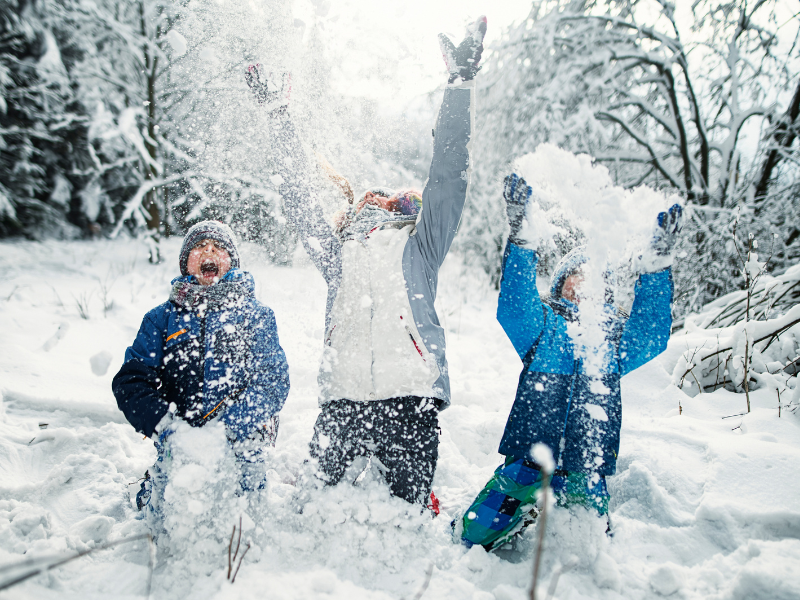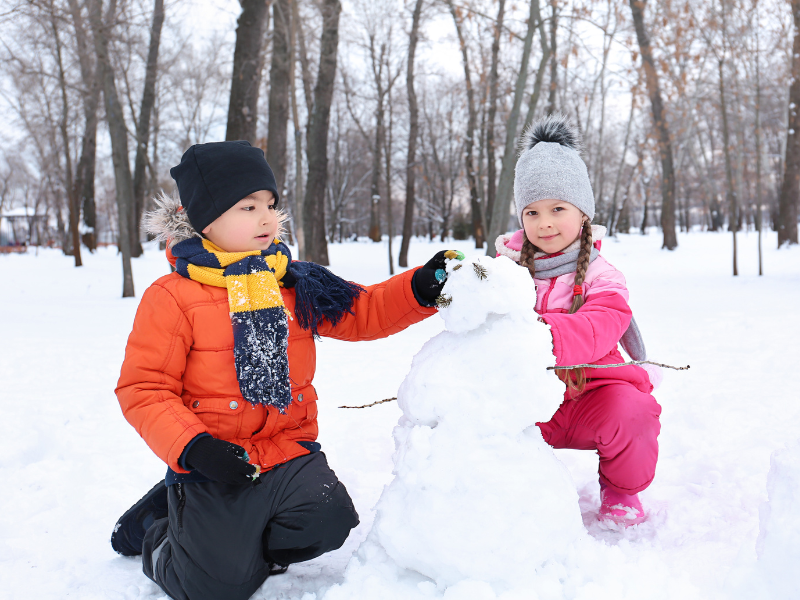Winter is a magical season, and while the chilly temperatures might tempt some to stay indoors, there's a world of wonder waiting outside in the form of snow. Snow-covered landscapes are fantastic for outdoor sensory play, allowing individuals of all ages to engage their senses and experience the beauty and thrill of winter. Below we will cover a few of the benefits of outdoor winter sensory play and suggest sensory-friendly snow activities that can help you make the most of the season.
The Benefits of Winter Sensory Play
-
Developmental Growth: Sensory play is essential for child development. It helps children refine their sensory processing skills, enhancing their ability to perceive and understand the world around them. Playing in the snow engages all five senses – sight, touch, taste, smell, and hearing – promoting cognitive, physical, and emotional development.
-
Physical Exercise: Winter sensory play encourages physical activity and exercise. Activities like building snowmen, snowball fights, and sledding require coordination, balance, and strength, contributing to the overall physical well-being of both children and adults.
-
Stress Reduction: Spending time in the serene, snow-covered outdoors can reduce stress and promote mental well-being. The calming effect of a snowy landscape can be therapeutic, allowing individuals to escape the pressures of daily life and connect with nature.
-
Creativity and Imagination: Snow is a blank canvas waiting to be transformed. Children and adults alike can unleash their creativity by building snow sculptures, forts, and even miniature snow villages. This imaginative play stimulates the brain and encourages problem-solving skills.
-
Social Interaction: Winter sensory play fosters social interaction and teamwork. Activities such as snowball fights or collaborative snow fort construction provide opportunities for bonding and communication among friends and family members.

Sensory-Friendly Snow Activities
-
Snowball Target Practice: Set up targets in the snow using sticks or snow molds and take turns throwing snowballs at them. This activity promotes hand-eye coordination and precision.
-
Snowy Shadow Art: On a sunny winter day, encourage children to create shadow art in the snow. They can use their bodies or objects to cast shadows and observe how the sun's angle changes the shapes and sizes of the shadows.
-
Snowy Storytelling: Have a winter-themed storytelling session outdoors. Gather around in a circle and take turns sharing winter stories or making up imaginative tales inspired by the snowy surroundings.
-
Snowy Animal Tracks: Go on a winter nature walk and look for animal tracks in the snow. Discuss the different shapes and sizes of tracks, sparking an interest in wildlife and observation skills.
-
Snowball Roll and Paint: Roll a snowball in different colors of powdered tempera paint and then roll it on a large piece of paper or cardboard to create colorful snow art. This activity combines tactile and visual sensory experiences.
-
Snowy Math Games: Practice math skills by creating snow-themed math games. Use snowballs as counters or create snow equations in the snow for children to solve.
-
Snowy Yoga: Engage in winter-themed yoga poses in the snow, combining physical activity with sensory awareness. Pose like snowflakes, snowmen, or animals found in snowy habitats.
-
Snow Volcano: Create a snow volcano by building a mound of snow with a hole in the center. Pour a mixture of baking soda and vinegar into the hole to create an exciting eruption, engaging both sight and touch.
-
Ice Balloon Sculptures: Freeze water balloons filled with colored water, creating vibrant ice sculptures. As they melt, children can explore the texture and color changes.
-
Snow Maze: Design a snow maze with pathways and dead ends. Challenge friends and family to navigate through the maze, enhancing problem-solving and spatial awareness.
-
Snowy Alphabet Hunt: Write letters of the alphabet in the snow and have children find and identify them. This activity combines letter recognition with outdoor exploration.
-
Snowy Bird Feeding: Hang bird feeders filled with seeds, suet, or nuts in your yard and observe the different bird species that visit. This activity encourages birdwatching and an appreciation for wildlife.
Winter sensory play in the snow offers numerous benefits for both children and adults. It promotes sensory development, physical activity, creativity, and social interaction while reducing stress and fostering a deeper connection with nature. The sensory-friendly snow activities mentioned in this article provide a perfect opportunity for individuals to embrace the winter season, engage their senses, and make lasting memories. So, bundle up, head outdoors, and let the magic of snow-filled adventures begin!

